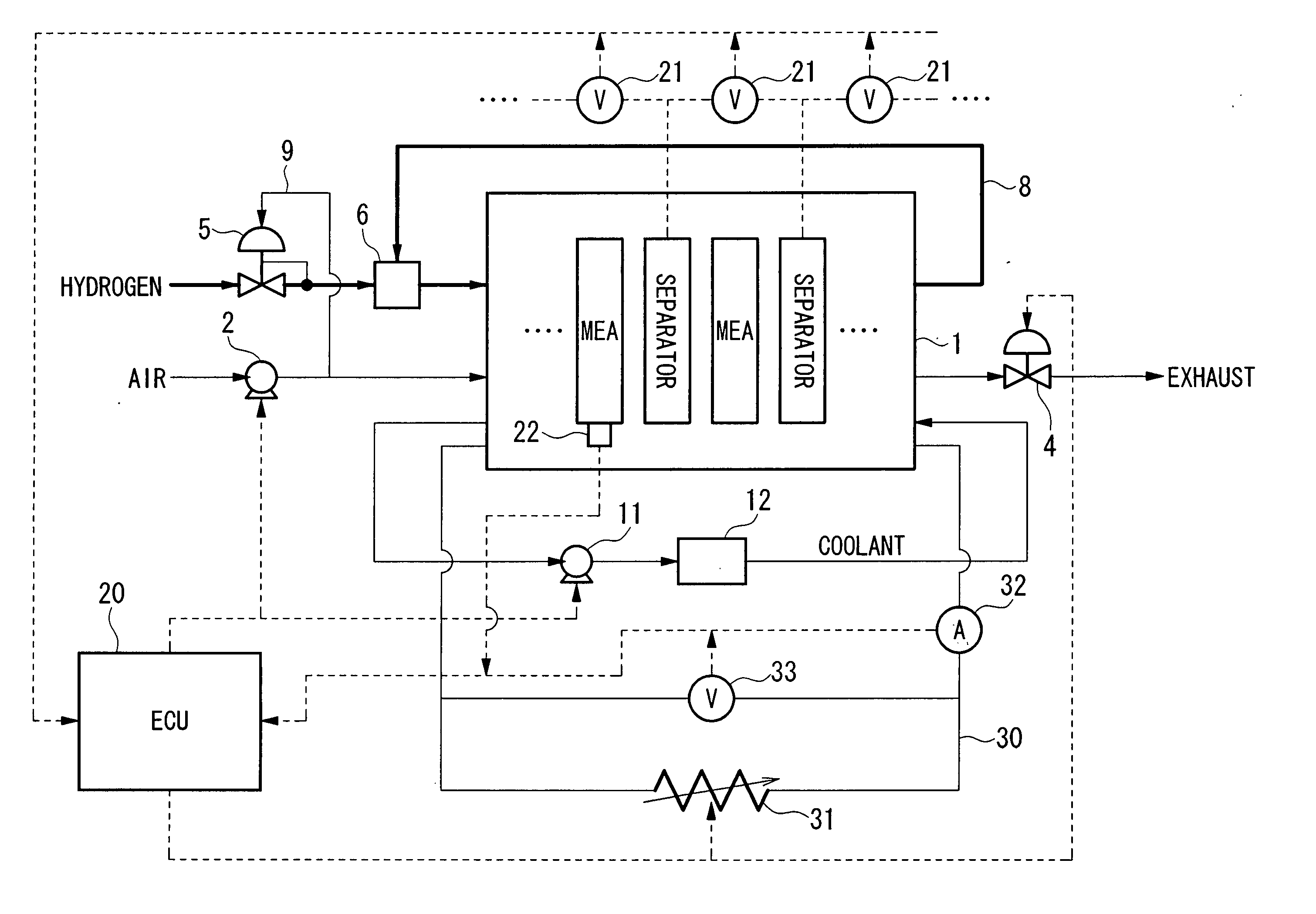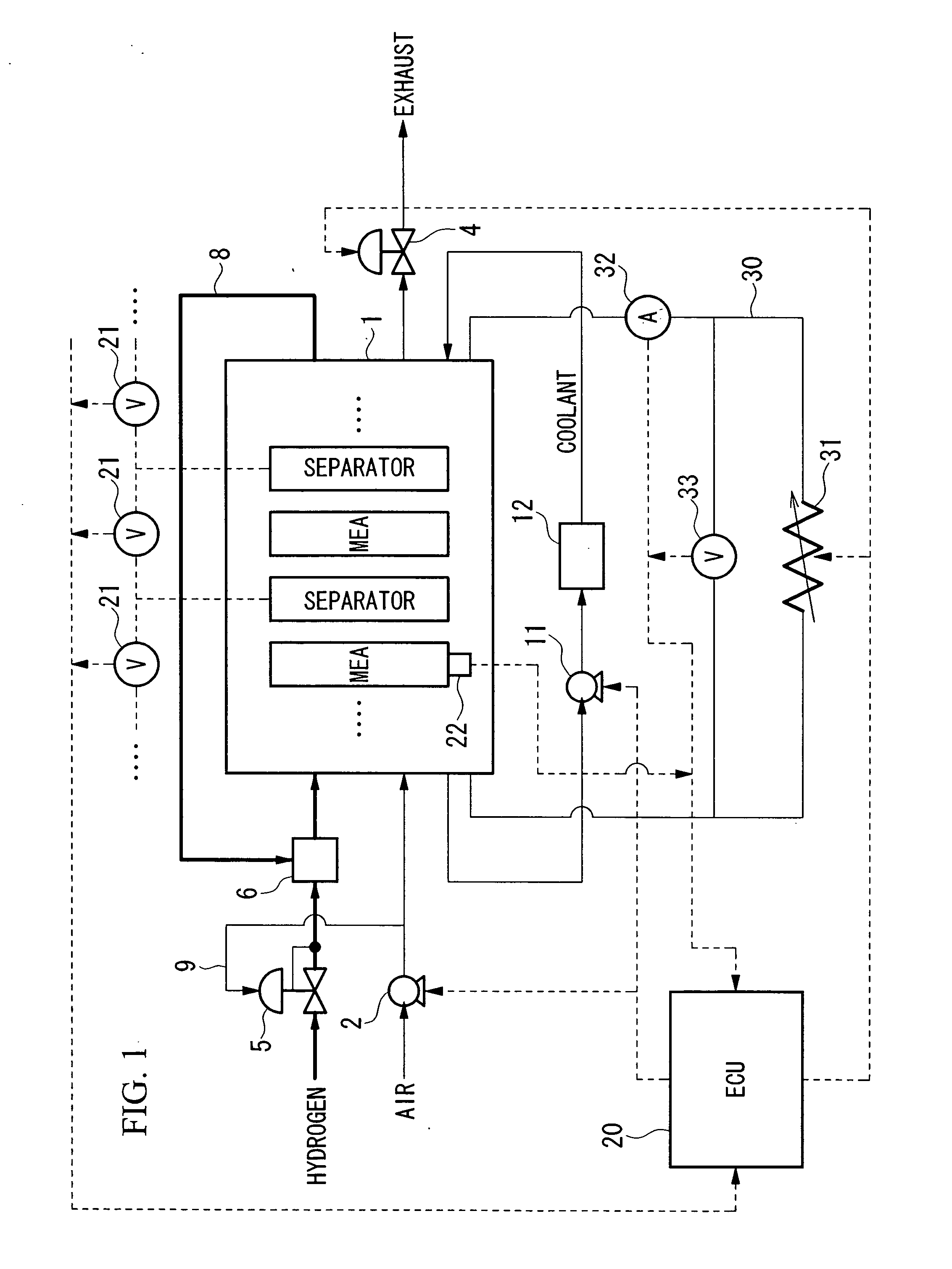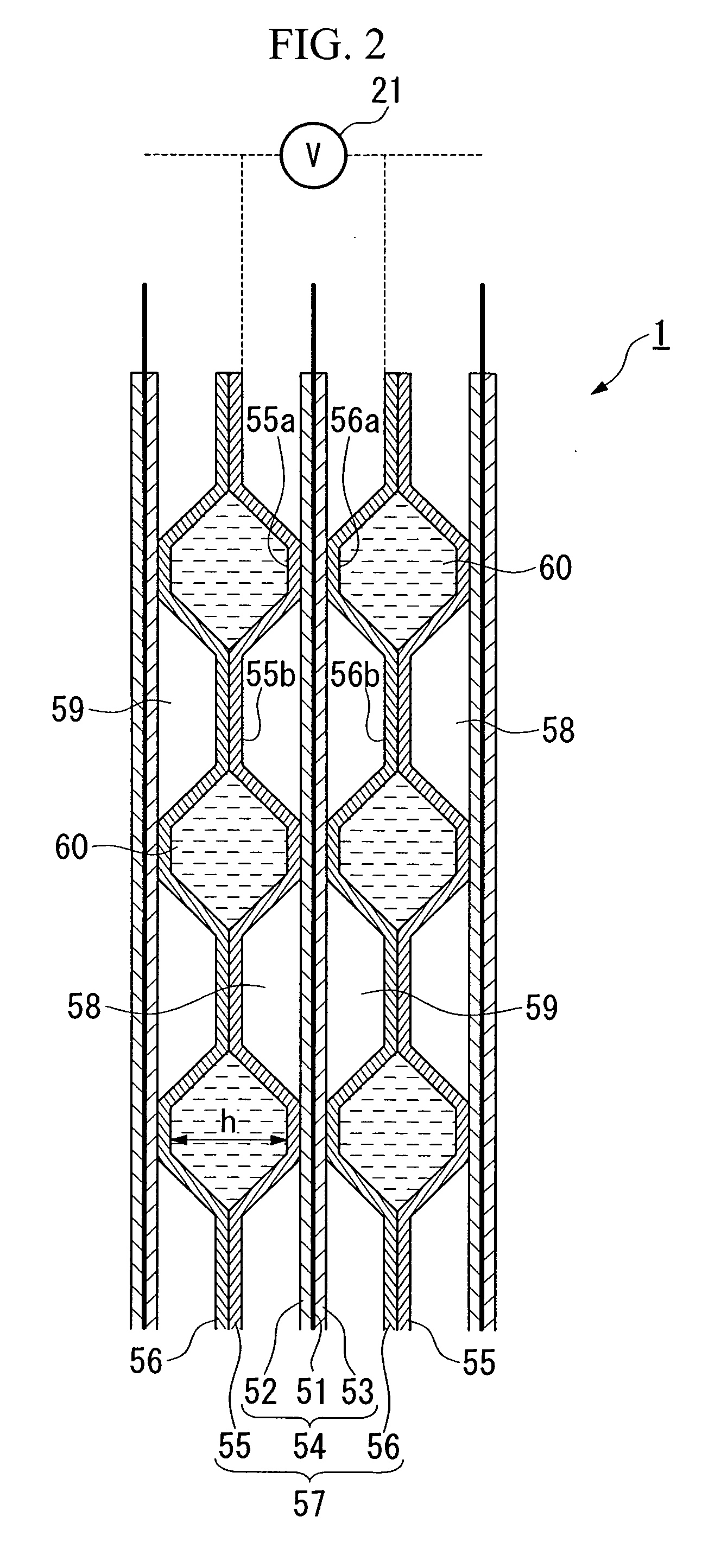Method and system for starting up fuel cell stack at subzero temperatures, and method of designing fuel cell stack
a fuel cell and subzero temperature technology, applied in the direction of cell components, cell component details, electrochemical generators, etc., can solve the problems of abrupt voltage drop, considerable time required before startup is achieved, and considerable time is required to achieve the effect of starting up and running at subzero temperatures, excellent effect, and keeping the degree of freedom
- Summary
- Abstract
- Description
- Claims
- Application Information
AI Technical Summary
Benefits of technology
Problems solved by technology
Method used
Image
Examples
control example 1
Constant Current Generation
[0168] The flowchart shown in FIG. 20 shows a start-up control routine when the fuel cell stack 1 is started up by the aforementioned constant current power generation at a subzero temperature. This start-up control routine is executed by the ECU 20.
[0169] Firstly, when the ignition switch of a fuel cell vehicle is turned ON (step S201), reaction gas is supplied to the fuel cell stack 1 (step S202). Namely, the compressor 2 is operated and the pressure control valve 4 and the fuel supply control valve 5 are opened. In addition, air is supplied to the air flow passages 59 and hydrogen gas is supplied to the fuel flow passages 58 of each single cell 57 of the fuel cell stack 1.
[0170] Next, the cell voltage of each single cell 57 is measured by the respective voltage sensors 21 (step S203), and a determination is made as to whether or not the lowest cell voltage from among the measured cell voltages is larger than a first threshold voltage V1 that has been...
control example 2
[0183] The flowchart shown in FIG. 21 shows a start-up control routine when output current of the fuel cell stack 1 is controlled using suitable current values that are set between the minimum required current and the maximum obtainable current at a subzero start-up. This start-up control routine is executed by the ECU 20.
[0184] The flowchart shown in FIG. 21 is basically the same as the flowchart shown in FIG. 20, and only varies in step S219 which corresponds to step S209 in the flowchart in FIG. 20. The same step numbers are given to processing in control example 2 that is the same as that in control example 1, and a description thereof is omitted, only step S219 is described.
[0185] In control example 2, in step S219, the output current of the fuel cell stack 1 is set while referring to an output current map (not shown) that uses, for example, the internal temperature of the fuel cell stack 1 as a parameter. Note that the output current map is created in advance based on experi...
control example 3
Constant Voltage Generation
[0188] The flowchart shown in FIG. 22 shows a start-up control routine when the fuel cell stack 1 is started up by the aforementioned constant voltage power generation at a subzero temperature. This start-up control routine is executed by the ECU 20.
[0189] Firstly, when the ignition switch of a fuel cell vehicle is turned ON (step S301), reaction gas is supplied to the fuel cell stack 1 (step S302). Namely, the compressor 2 is operated and the pressure control valve 4 and the fuel supply control valve 5 are opened. In addition, air is supplied to the air flow passages 59 and hydrogen gas is supplied to the fuel flow passages 58 of each single cell 57 of the fuel cell stack 1.
[0190] Next, the cell voltage of each single cell 57 is measured by the respective voltage sensors 21 (step S303), and a determination is made as to whether or not the lowest cell voltage from among the measured cell voltages is larger than a first threshold voltage V1 that has been...
PUM
| Property | Measurement | Unit |
|---|---|---|
| temperature | aaaaa | aaaaa |
| temperature | aaaaa | aaaaa |
| current density | aaaaa | aaaaa |
Abstract
Description
Claims
Application Information
 Login to View More
Login to View More - R&D
- Intellectual Property
- Life Sciences
- Materials
- Tech Scout
- Unparalleled Data Quality
- Higher Quality Content
- 60% Fewer Hallucinations
Browse by: Latest US Patents, China's latest patents, Technical Efficacy Thesaurus, Application Domain, Technology Topic, Popular Technical Reports.
© 2025 PatSnap. All rights reserved.Legal|Privacy policy|Modern Slavery Act Transparency Statement|Sitemap|About US| Contact US: help@patsnap.com



